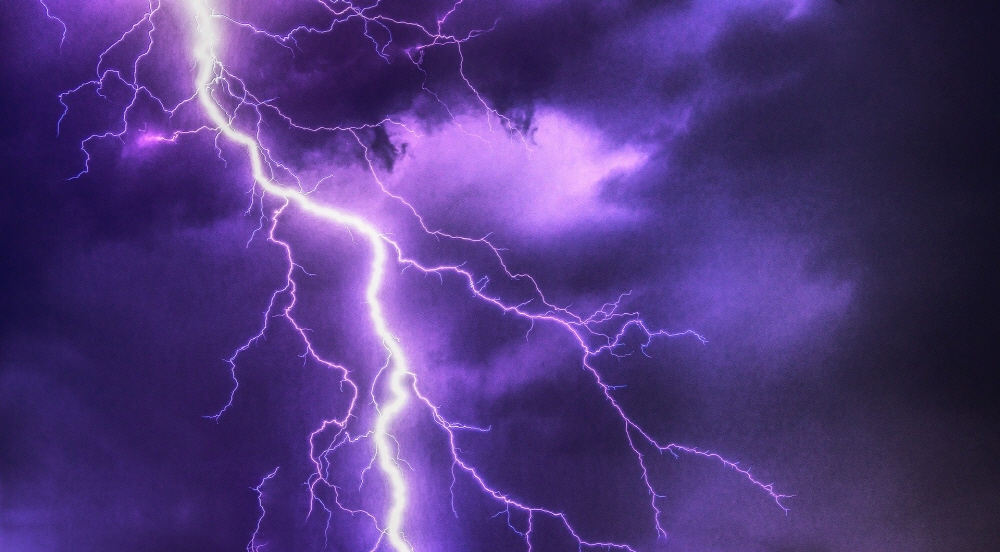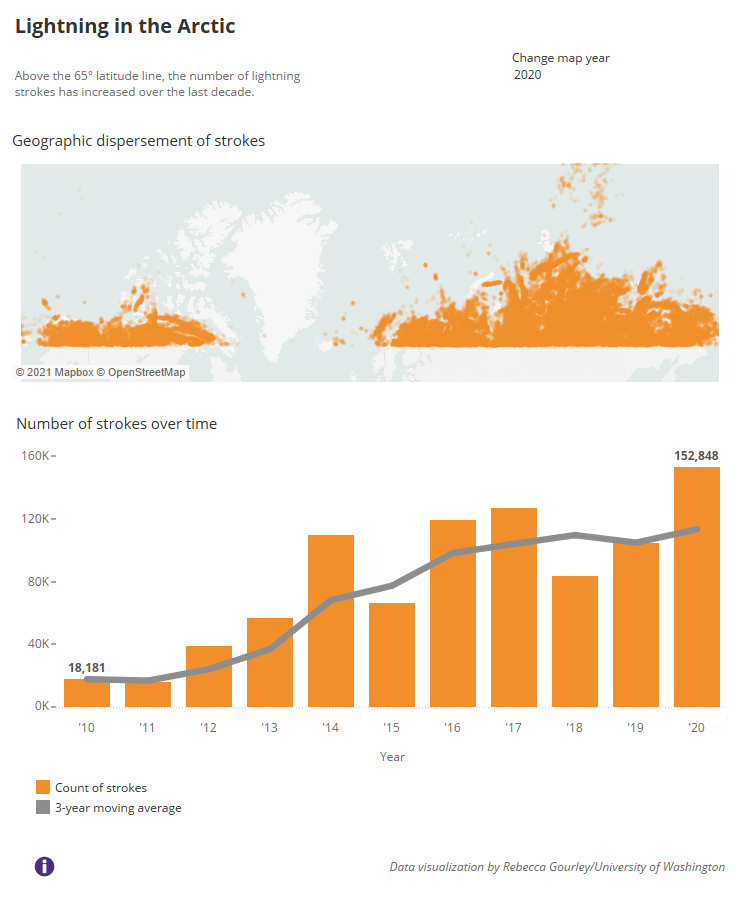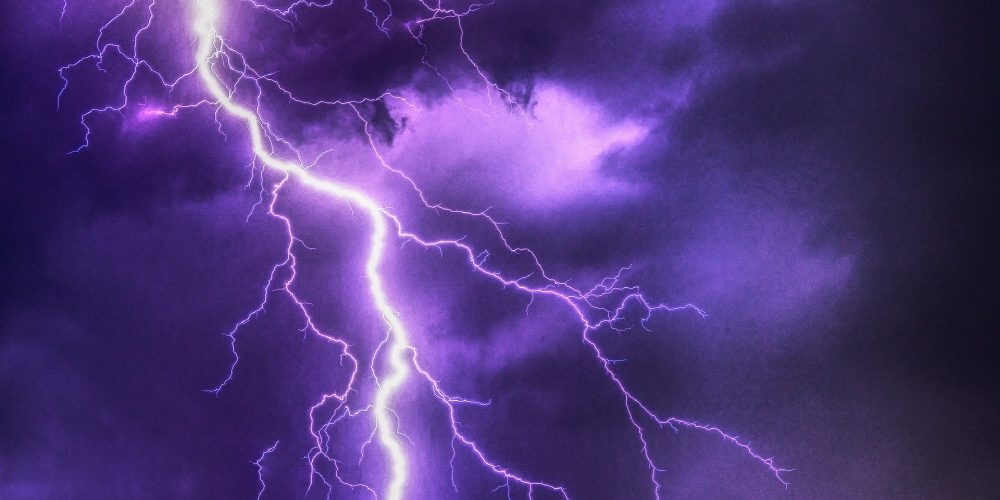
The number of arctic lightning strikes has tripled over the past decade, and the latest research suggests that climate change may be the cause.
Recently, in the Geophysical Research Letter, a paper was published that analyzed lightning data collected by WWLLN sensors, a lightning observation network worldwide. When lightning strikes, it emits short, low-frequency radio waves, and the WWLLN sensor detects and records it.
The research team at the University of Washington, which operates the network, first uses WWLLN data to investigate lightning strikes above 65 degrees latitude in June, July and August from 2010 to 2020. This region includes most of the Arctic and Greenland, Alaska and parts of Russia. Lightning itself is quite peculiar in this area because it requires a lot of moisture to generate a thunderstorm, but it is revealed that lightning is increasing in the Arctic Circle, including lightning strikes near the North Pole in 2019.
The number of summer lightning strikes in the Arctic over the past 10 years analyzed is said to have soared from 18,000 in 2010 to more than 150,000 in 2020. To confirm that this was not the result of WWLLN’s newly introduced sensor detection capability over the past decade, the research team first adjusted the data to take into account the new sensor. For comparison, the number of lightning bolts was simultaneously counted outside the Arctic. As a result, it was found that the number of arctic lightning strikes from 0.2% worldwide in 2010 has tripled to 0.6% after 10 years.

This study does not prove to be conclusive that climate change has caused an increase in lightning. But they are saying that rapid Arctic warming has something to do with it. This region is warming at three times the rate of other regions, and the research team can say that the increase in lightning is closely linked to the warming trend that the Arctic has experienced for 10 years.
Past research has assumed that climate change is increasing lightning strikes not only in the Arctic, but also in other parts of the world. Forecasts suggest that in the United States alone, lightning may increase by more than 50% during this century.
Lightning increases can be dangerous in areas where lightning is unfamiliar and human activity increases even around the world. Indigenous peoples who have lived in the Arctic Circle for centuries may have an influence on their traditions. Route openings are increasing in this area. Increasing lightning can be a threat to ships.
Long-term ice loss in the Arctic Ocean can lead to more ships, resulting in the same problems as in low-latitude regions. Here, many point out that not knowing about the lightning threat can be a problem. Related information can be found here.


















Add comment